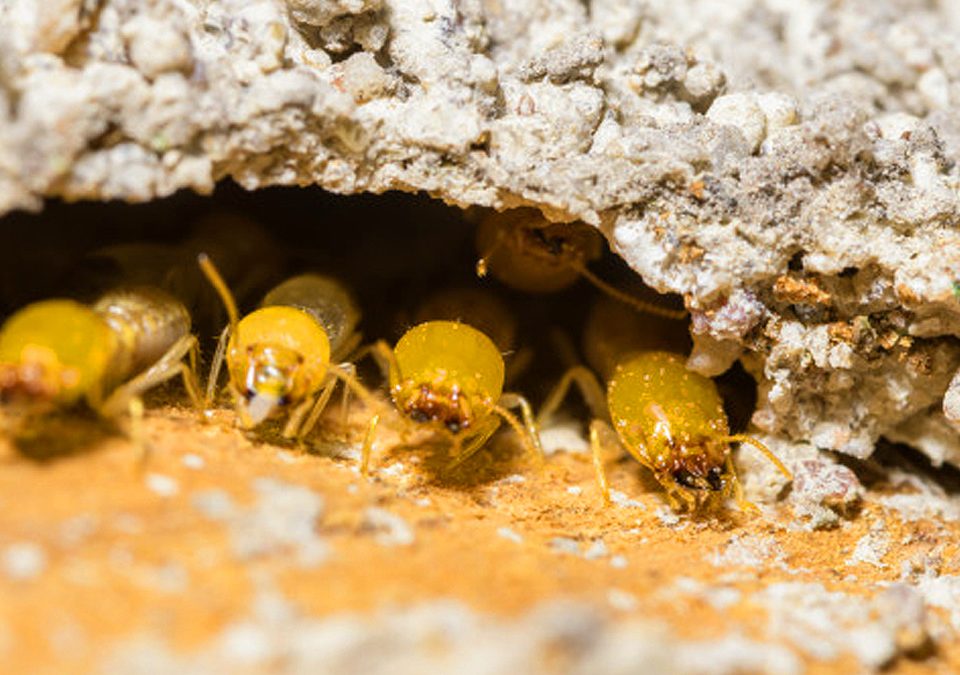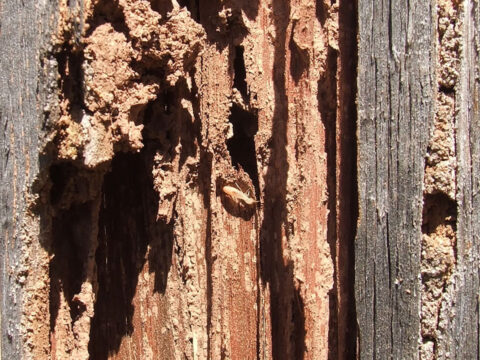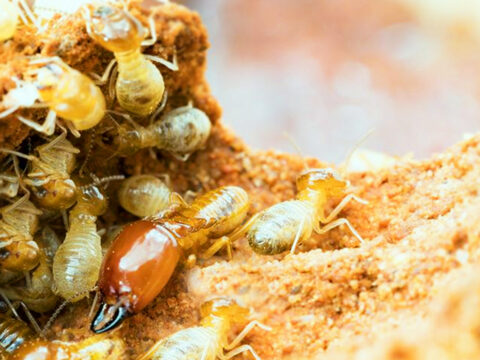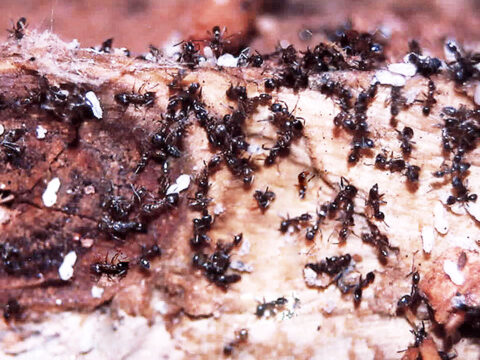
What Time Of Day Are Termites Most Active?
September 20, 2023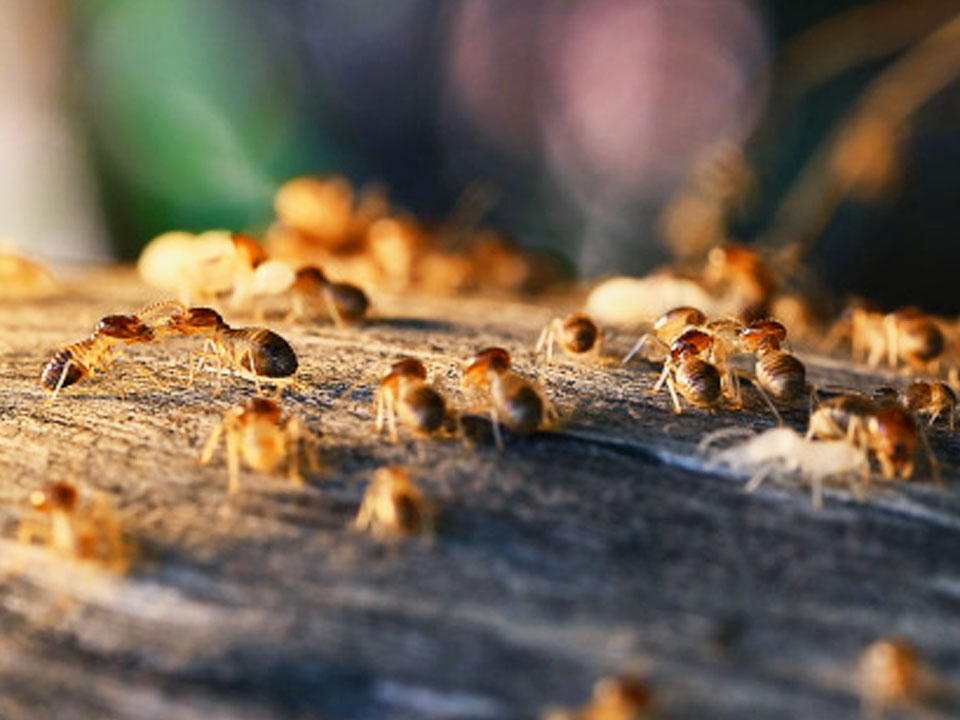
Can Termites Also Be A Problem In New Homes?
November 20, 2023The last thing you want to hear is that your house has a termite problem. These silent invaders are known to wreak havoc on the structural integrity of the house, leading to costly repairs and headaches.
But did you know that termites can also contribute to another issue that’s equally troublesome – mold?
In this post, we will answer the question of whether termites can cause mold in your house. We’ll discuss the connection between termites and mold, identify the physical signs of termite damage and mold growth, and pinpoint common areas in the house where these problems may occur.
So, if you care about protecting your home from these hidden threats, you don’t want to skip the rest of this article!
What Is The Connection Between Termites And Mold?
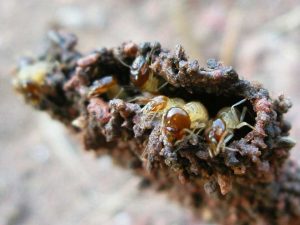 Termites and mold may seem unrelated at first glance, but there is a valid connection between these two household nightmares. It’s all because of the destructive behavior of termites.
Termites and mold may seem unrelated at first glance, but there is a valid connection between these two household nightmares. It’s all because of the destructive behavior of termites.
It’s no wonder that termites and mold are often found in the same environments. They both require dead wood to survive, which is why they tend to inhabit the same structures. Also, both termites and mold thrive in moist conditions with an abundance of cellulose, which is why both problems are typically discovered at the same time.
Termites are notorious for their insatiable appetite for cellulose-rich materials, which include wood, paper, and even some forms of insulation. As these tiny insects tunnel through the wooden structures of your home, they create hollow galleries and passageways, which compromises the structural integrity of your house over time.
That being said, termites themselves do not cause mold. They thrive in dark, damp environments, and as they burrow through wood, they often introduce moisture into the damaged areas they create. This moisture, combined with the wood’s cellulose, creates an ideal breeding ground for mold.
When termites eat wood, they can cause mold and mildew to grow, releasing spores into the air. Mold spores are present everywhere, but they require moisture and organic material to grow. Termites provide both, making your home a perfect incubator for mold.
Termites can also cause wooden structures to decompose, which can further exacerbate mold growth in damp and humid environments. Some types of fungi can even provide termites with more nutrients from wood, making them more attracted to infected wood.
So, while termites don’t cause mold, they tend to infest rotten or decaying wood, which is the same wood you can typically find mold.
Therefore, when you discover termites in your home, it’s common to also discover mold, and it’s important to get your home inspected for mold whenever you have a termite infestation. This connection between termites and mold underscores the importance of addressing both issues when dealing with household pests.
Physical Signs Of Termite Damage And Mold Growth
Detecting termite damage and mold growth early is crucial to minimizing the potential harm to your home and your health.
Here are some telltale signs to watch for:
1. Termite Damage:
Hollowed Wood – Knocking on wooden surfaces, such as beams or flooring, may produce a hollow sound if termites have infested the area.
Bubbling Or Uneven Paint – Termites can damage wall surfaces, causing paint to bubble or appear uneven.
Mud Tubes – Subterranean termites often construct small, pencil-thin mud tubes along the foundation, which are used as shelter and moisture sources.
Discarded Wings – After swarming, termites shed their wings. Finding discarded termite wings around your house is a clear indication of termite activity.
Visible Termite Swarm – Witnessing a termite swarm inside your home is a sure sign of an active infestation. Swarms usually occur in the spring.
2. Mold Growth:
Musty Odor – Mold often emits a musty, unpleasant odor. If you notice a lingering musty smell in certain areas of your house, investigate for mold growth.
Discoloration – Mold can cause discoloration on walls, ceilings, and other surfaces. It may appear as green, black, or brown patches.
Peeling Paint Or Wallpaper – Moisture caused by termite activity can lead to peeling paint or wallpaper. If you see these signs, mold might be lurking beneath.
Visible Mold – In some cases, you may physically see mold growth on surfaces, especially in areas prone to moisture, such as basements, bathrooms, and crawlspaces.
Common Areas In The House Where Termites And Mold Can Be Found
Now that you know what signs to look for, it’s important to know where to focus your attention. Termites and mold can thrive in various areas of your house. However, there are some common hiding spots in a house where both termites and mold can potentially be found, and understanding them is key to early detection.
Basements And Crawlspaces
Termites can access the wooden structure of your house through cracks in the foundation, basements, and crawlspaces. These areas are often dark and damp, which creates an ideal environment for both termites and mold. Since these are major breeding grounds for mold, keep them well-ventilated and free from moisture.
Attics
Leaky roofs or inadequate ventilation in attics can create moisture problems that promote mold growth. Termites may also infest wooden structures in your attic spaces, particularly if there is exposed, untreated wood.
Bathrooms
Bathrooms are prone to moisture buildup due to showers, baths, and sinks. Mold can thrive in bathrooms due to the high humidity levels. Pay close attention to tile grout, walls, ceilings, and under sinks. Termites are less common in bathrooms but may infest wooden fixtures or structures if moisture issues persist.
Kitchens
Kitchens can have plumbing leaks or moisture buildup around sinks and appliances, which can lead to mold growth. Termites may not be as common in kitchens, but they can infest wooden cabinets or structural elements if there’s a moisture source.
Wooden Structures
Any wooden structures in your home, such as beams, floor joists, wooden support structures, or even furniture, are susceptible to termite infestations. Mold can also grow on wooden surfaces if moisture is present. Inspect these areas regularly.
Additionally, check wooden siding, decks, and fences for termite damage as termites can also enter your home from the outside.
Window And Door Frames
If there are leaks around windows and doors, moisture can accumulate in the surrounding areas and make them susceptible to mold growth. Termites can also infest wooden window and door frames.
To conclude, termites and mold are not just individual nuisances that homeowners should be concerned about. There is a clear connection between these two problems, as termite activity can introduce moisture and create conditions ideal for mold growth.
It is very important to address both termite infestations and mold growth promptly. If left unchecked, these issues can lead to significant structural damage and pose health risks to you and your family.
If you suspect or observe any signs of termite activity in your home, it’s advisable to contact Chem Free Exterminating immediately. Our termite control professionals in Orange County, California, can assess the extent of the problem and implement effective solutions to protect your home and your well-being. Take action today to ensure your home is safe from pests for years to come!

